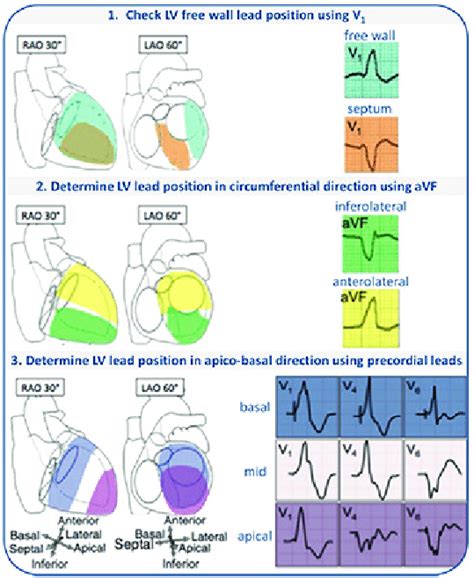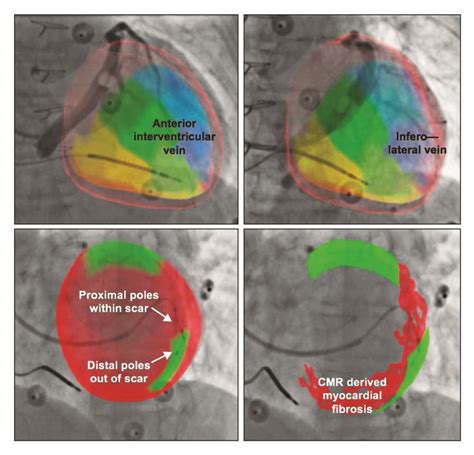lv lead implantation | left ventricular lead placement procedure lv lead implantation An optimal placement of the left ventricular (LV) lead appears crucial for the intended hemodynamic and hence clinical improvement. A well-localized target area and tools that help to achieve successful lead implantation seem to be of utmost importance to reach an optimal . LOUIS VUITTON Official International site - Discover our latest Watches's Watch Straps collection, exclusively on louisvuitton.com and in Louis Vuitton Stores.
0 · lv pacing lead placement
1 · lv lead placement in therapy
2 · lv lead placement
3 · lv lead failure rates
4 · left ventricular lead resynchronization
5 · left ventricular lead placement procedure
6 · lead placement for heart failure
7 · epicardial lead placement
«E-Lats» Daugavpilī . Alejas iela 87,Daugavpils ,LV-5401: 29232651: 9.00-20.00. Svētdienās 9.00-18.00. Skatīt kartē «E-Lats» Daugavpilī . Rīgas iela 72, Daugavpils, LV-5401: 25918418: 9.00-20.00. Sestdien, svētdien. 9.00-18.00. Skatīt kartē «E-Kredīts» Jēkabpilī (t/c «Rimi mini») Rīgas iela 120, Jēkabpils, LV-5202: .
An optimal placement of the left ventricular (LV) lead appears crucial for the intended hemodynamic and hence clinical improvement. A well-localized target area and tools that help to achieve successful lead implantation seem to be of utmost importance to reach an optimal .
Improved outcome to CRT has been associated with the placement of a left ventricular (LV) lead in the latest activated segment free from scar. The majority of randomized . Expanding indications for cardiac resynchronization therapy (CRT) and emerging data on the importance of targeted left ventricular (LV) lead placement have resulted in .
LV lead implantation is limited by constraints of the venous anatomy, phrenic nerve pacing, lead stability, and pacing threshold. Most implanting physicians battle these .ABSTRACT. The present article reviews the literature on image-guided cardiac resynchronization therapy (CRT) studies. Improved outcome to CRT has been associated with the placement of .
30 March 2012. PDF. Split View. Cite. Permissions. Share. Abstract. Aims. We sought to determine the clinical and survival outcomes of cardiac resynchronization therapy (CRT) . Cannulating the coronary sinus (CS) to place a left ventricular (LV) lead is widely recognized as the most challenging aspect of implanting biventricular pacing devices for the delivery of cardiac resynchronization .This review presents specialized tools and techniques to overcome some of the most common problems encountered in LV lead placement in CRT. These tools and techniques are termed Interventional CRT (I-CRT), as they share .In conclusion, the advanced anchor balloon technique and the IVUS-guided wiring are effective methods that can be used to implant an LV lead in challenging PLSVC cases. IVUS-guided .
An optimal placement of the left ventricular (LV) lead appears crucial for the intended hemodynamic and hence clinical improvement. A well-localized target area and tools that help to achieve successful lead implantation seem to be of utmost importance to .
Improved outcome to CRT has been associated with the placement of a left ventricular (LV) lead in the latest activated segment free from scar. The majority of randomized controlled trials investigating guided LV lead implantation did not show superiority over conventional implantation approaches. Anatomical and technical challenges can hinder optimal LV lead placement using traditional lead implantation approaches. Knowledge of normal anatomical variants and common anomalies is essential for successful LV lead implants. Expanding indications for cardiac resynchronization therapy (CRT) and emerging data on the importance of targeted left ventricular (LV) lead placement have resulted in renewed focus on refining implantation technique. Many implanting physicians use an “over-the-wire” approach to LV lead placement that may not provide enough support for lead .
LV lead implantation is limited by constraints of the venous anatomy, phrenic nerve pacing, lead stability, and pacing threshold. Most implanting physicians battle these impediments and struggle, often unsuccessfully, to place the lead along the posterolateral and lateral walls.
ABSTRACT. The present article reviews the literature on image-guided cardiac resynchronization therapy (CRT) studies. Improved outcome to CRT has been associated with the placement of a left ventricular (LV) lead in the latest activated segment free from scar.30 March 2012. PDF. Split View. Cite. Permissions. Share. Abstract. Aims. We sought to determine the clinical and survival outcomes of cardiac resynchronization therapy (CRT) associated with left ventricular (LV) lead location. The lateral left ventricle has been considered the optimal LV lead location for CRT. Cannulating the coronary sinus (CS) to place a left ventricular (LV) lead is widely recognized as the most challenging aspect of implanting biventricular pacing devices for the delivery of cardiac resynchronization therapy (CRT) in patients with heart failure (HF) and ventricular dyssynchrony.This review presents specialized tools and techniques to overcome some of the most common problems encountered in LV lead placement in CRT. These tools and techniques are termed Interventional CRT (I-CRT), as they share technology with other interventional procedures.
In conclusion, the advanced anchor balloon technique and the IVUS-guided wiring are effective methods that can be used to implant an LV lead in challenging PLSVC cases. IVUS-guided wiring has another advantage for CRT implantation in that .An optimal placement of the left ventricular (LV) lead appears crucial for the intended hemodynamic and hence clinical improvement. A well-localized target area and tools that help to achieve successful lead implantation seem to be of utmost importance to . Improved outcome to CRT has been associated with the placement of a left ventricular (LV) lead in the latest activated segment free from scar. The majority of randomized controlled trials investigating guided LV lead implantation did not show superiority over conventional implantation approaches.
gucci beanie hat selfridges
Anatomical and technical challenges can hinder optimal LV lead placement using traditional lead implantation approaches. Knowledge of normal anatomical variants and common anomalies is essential for successful LV lead implants. Expanding indications for cardiac resynchronization therapy (CRT) and emerging data on the importance of targeted left ventricular (LV) lead placement have resulted in renewed focus on refining implantation technique. Many implanting physicians use an “over-the-wire” approach to LV lead placement that may not provide enough support for lead . LV lead implantation is limited by constraints of the venous anatomy, phrenic nerve pacing, lead stability, and pacing threshold. Most implanting physicians battle these impediments and struggle, often unsuccessfully, to place the lead along the posterolateral and lateral walls.ABSTRACT. The present article reviews the literature on image-guided cardiac resynchronization therapy (CRT) studies. Improved outcome to CRT has been associated with the placement of a left ventricular (LV) lead in the latest activated segment free from scar.
30 March 2012. PDF. Split View. Cite. Permissions. Share. Abstract. Aims. We sought to determine the clinical and survival outcomes of cardiac resynchronization therapy (CRT) associated with left ventricular (LV) lead location. The lateral left ventricle has been considered the optimal LV lead location for CRT. Cannulating the coronary sinus (CS) to place a left ventricular (LV) lead is widely recognized as the most challenging aspect of implanting biventricular pacing devices for the delivery of cardiac resynchronization therapy (CRT) in patients with heart failure (HF) and ventricular dyssynchrony.This review presents specialized tools and techniques to overcome some of the most common problems encountered in LV lead placement in CRT. These tools and techniques are termed Interventional CRT (I-CRT), as they share technology with other interventional procedures.

lv pacing lead placement

Pristatymas: Pasirinkti laiką. Geros kainos pažadas. Privačios etiketės produktai. Tavo produktai. Viskas grilio sezonui. Veganams ir vegetarams. Šią savaitę pigiau. Daugiau pasiūlymų. Savaitės penketas. Daugiau pasiūlymų. Mamutų dienos. Daugiau pasiūlymų. Rinkis didesnį kiekį ir taupyk kasdien! Daugiau pasiūlymų. Saulės kosmetikai -30 %
lv lead implantation|left ventricular lead placement procedure


























